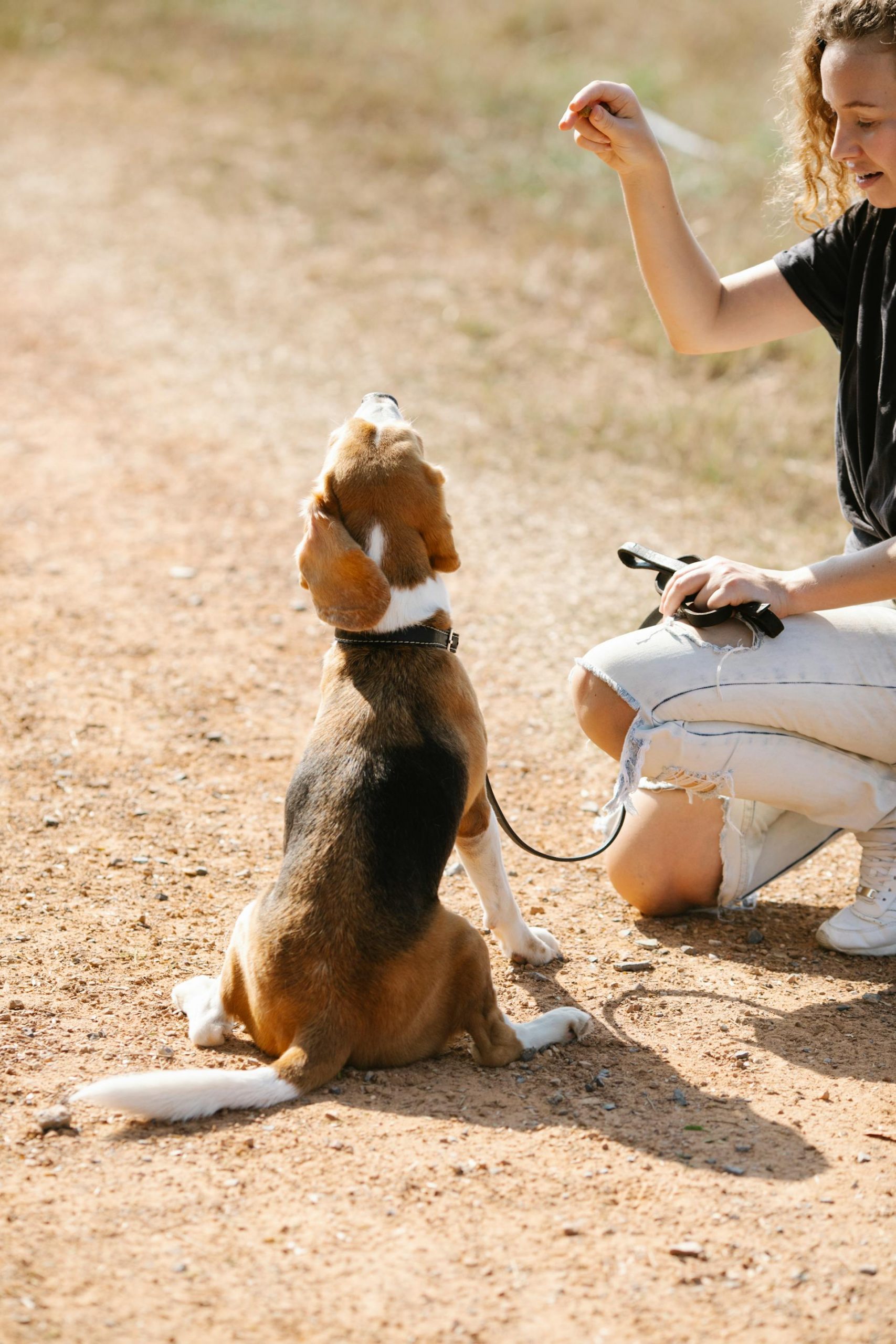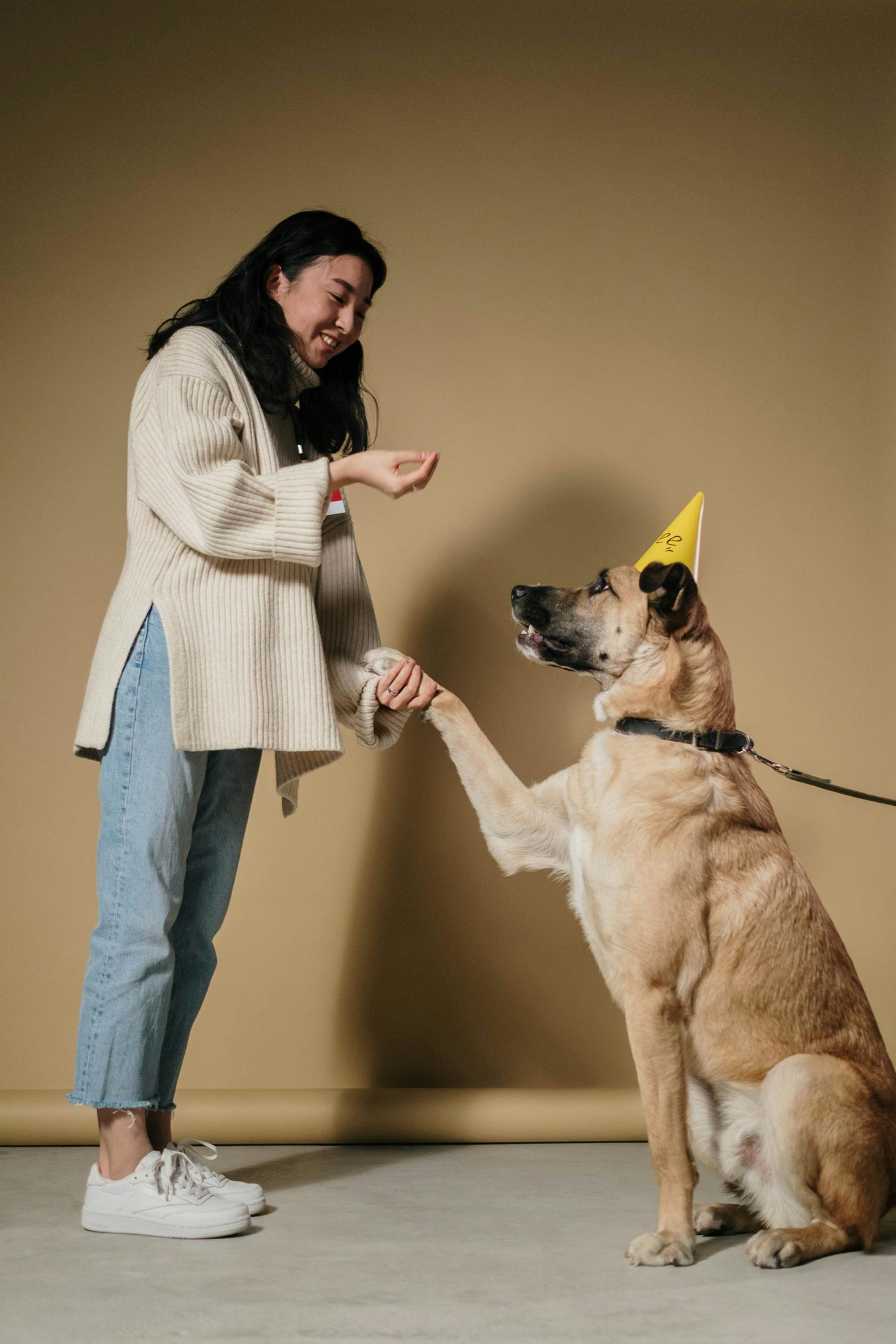You cannot wave with a magic wand and get a well-mannered dog. There is a saying, “Nature gives you a puppy, but nurture, socialization, and training give you a companion dog”. To put it simply, a well-behaved dog is a product of genetics, training, and a loving home.
The good news is that for the dog training part, you can seek outside help. Some pet parents choose to train their dogs on their own. But if you are a first-time dog owner, or you have trouble training your dog, you should resort to canine behavior professionals.
Now, the question is whether you need a behaviorist or a trainer. What is the difference between a dog behaviorist vs dog trainer? Let’s find out!
Can a Dog Trainer also be a Behaviorist?
Some dog trainers have the skills to address behavioral issues, but the roles of a trainer and a behaviorist are distinct.
As we will see later on, dog trainers focus on teaching commands and obedience through conditioning. A dog behaviorist goes deeper into canine psychology to address complex behavioral issues. For example, anxiety, aggression, trauma, or anything similar.
How Long Does It Take to Train a Dog?
Dog training duration depends on many factors, including age, temperament, and methods. Treating each dog requires a different and individual method. Basic obedience can last anywhere from six weeks, to several months.
And addressing behavioral issues like aggression and anxiety may need a more prolonged process. There is no definitive answer to this question.
Dog Behaviorist vs Dog Trainer – A Quick Overview
Dog Trainer
Dog trainers are professionals who train dogs to perform specific commands, behaviors, and obedience. They use a variety of methods that will help your dog understand and master a new behavior. You should always look for a trainer that uses a positive reinforcement method.
Trainers work with dogs of all ages and breeds, teaching basic commands like sit, stay, come, leave it, and advanced agility trainer or hunting skills.
While a dog trainer can work with dogs with behavioral issues, their main focus of expertise is on teaching obedience commands. They rarely address underlying behavioral issues.
Dog Behaviorist
A dog behaviorist is a professional focusing on behavioral issues. While trainers work on commands, behaviorists address complex issues like aggression, fear, and anxiety. In addition to positive reinforcement, they use techniques like counter-conditioning and desensitization to address problems.
They work with dogs who have serious problems, including fear of people, separation anxiety, or aggression towards people. Dog behaviorists also work with rescue dogs that have been abused.
What is the Role of Behaviorists and Trainers?
The best way to understand the difference between dog behaviorist vs dog trainer is to look at their roles in shaping your furry friend.
- Dog trainers teach your puppy basic obedience skills and commands. They work with puppies and adult dogs to help them learn manners, reduce inappropriate behaviors, and shape positive habits. Trainers work to help the relationship between dogs and dog owners. They can work with dogs with specific needs, like service dogs or therapy dogs. In some cases, they can work on activities like agility training and obedience competitions
- Dog behaviors try to identify and address underlying behavioral issues that can cause problems for the dog and its pet owner. They identify issues like anxiety, fear, and aggression, and then create a treatment plan for each individual dog. Behaviorists also work with rescue dogs that have gone through trauma or abuse and help rehabilitate these dogs and make them ready for a new life
Skills and Abilities
Dog trainers
Both trainers and behaviorists have a diverse range of skills that help them connect with dogs and understand them. These professionals understand dogs on an emotional level. Dog trainer skills include:
- Grasp of canine behavior, psychology, and body language.
- Proficiency in different puppy training methods.
- Ability to assess dogs’ individual needs, temperament, and personality.
- Strong communication skills.
- Knowledge of dog breeds and specific temperament and personality traits.
As for techniques, dog trainers use positive reinforcement, clicker training, obedience training, agility training, and relationship-based training. Each training method is different and addresses the specific needs of dogs and pet parents. For example, relationship-based training builds a bond between owners and pets, emphasizing communication and understanding of dog body language.
Dog behaviorists
A behaviorist is someone who understands behavioral issues and problem behaviors in dogs. These canine professionals have knowledge of various aspects of canine psychology, ethology, and behavior modification. Their skills allow them to help dogs overcome challenges like separation anxiety and aggression towards people and animals.
With a strong background in animal behavior, their area of expertise includes problem behaviors, training and socialization, and interpreting dog behavior.
For example, a dog behaviorist can identify and address disruptive behaviors, dangerous behaviors, and problematic behaviors for dogs and owners. They offer guidance and support for proper training techniques, socialization, and preventing problems.
Most importantly, a dog trainer can provide insight into the underlying motivations and emotional state of your dog’s actions.
Dog behaviorists use modification techniques aimed at helping dogs overcome their challenges and improve their quality of life. The four main approaches are:
- Positive reinforcement: encouraging a desired behavior by offering treats, toys, and similar positive associations.
- Desensitization: gradually exposing dogs to a stimulus, allowing them to become accustomed to it over time. Stimulus can include loud noise, unfamiliar objects, people, bicycles, and everything else.
- Counter-conditioning: try to replace an undesired emotional response, for example, aggression, with a positive one by introducing a pleasant stimulus with the problematic trigger.
- Cognitive-behavioral therapy: help dogs understand the connection between emotions and behaviors, creating healthy patterns for your puppy.
How to Choose the Right Professional for Your Dog?
There are plenty of qualified people and professionals who can help you and your furry friend. Do not rush it. Take your time, assess the situation, and decide which role suits your dog’s needs. Does your dog need basic training? Or does your dog suffer from behavioral issues?
No matter which type of professional you hire, always look at his/her resume and try to speak with past clients. Look at reviews and see how previous clients worked with that professional.
Make sure a dog professional uses positive reinforcement techniques.
What about Group Classes?
Group classes are great for dogs that need to learn basic manners and skills. Usually, group classes work best for young puppies and first-time pet owners.
Your dog will learn commands like sit, stay, come, walk on a leash, and more. At the same time, your pup will learn to be comfortable around other dogs.
Group classes cost less than a one-on-one session. While they help with basic obedience and socialization, you cannot address an underlying issue in a group class.
Final Words
No matter whether you choose a dog behaviorist or certified dog trainer, you have to set a reasonable level of expectation. Remember, certain behaviors come naturally for dogs. They may be annoying, but they are natural.
You cannot expect a dog bred for protection not to bark. You should expect some degree of barking, digging, and chewing, depending on the dog breed. Training cannot 100% eliminate certain behaviors. You do not want to change your dog’s nature.
What is important is to understand the difference between a professional dog trainer and a certified applied animal behaviorist. Some people may use these terms interchangeably, but there is a significant difference.










